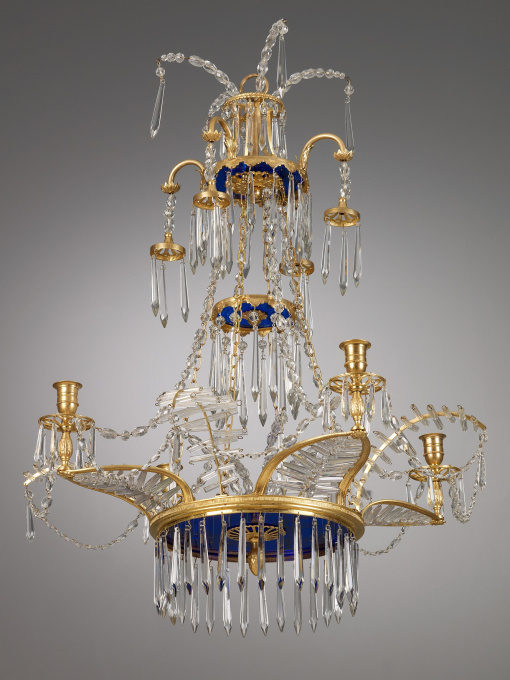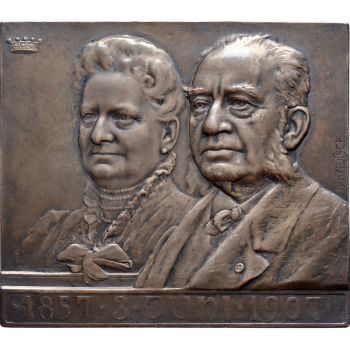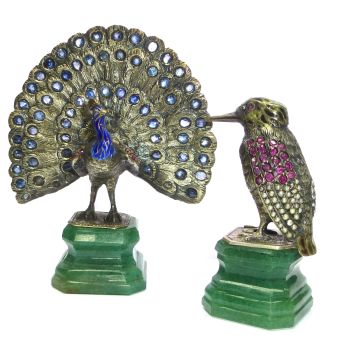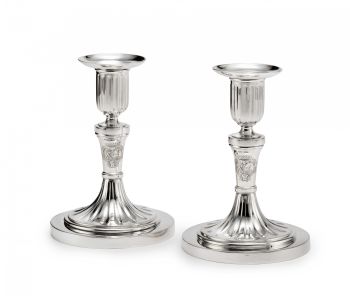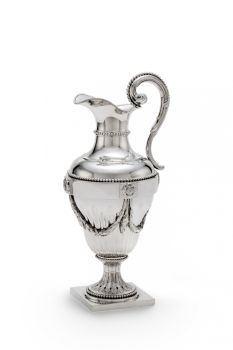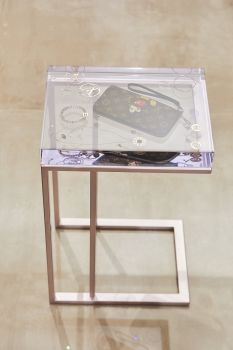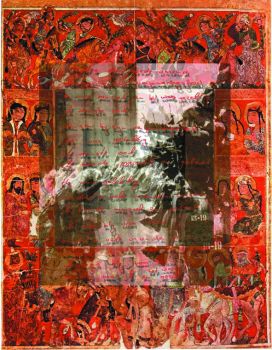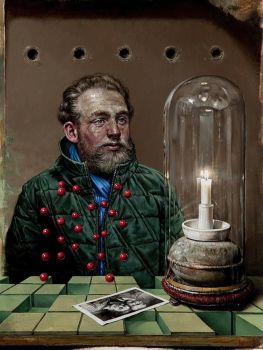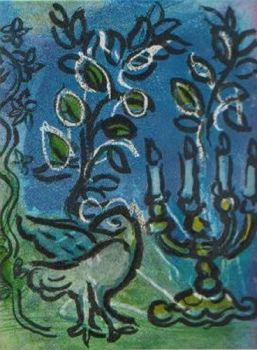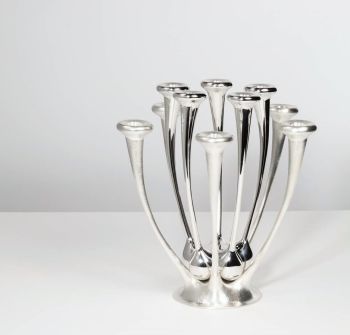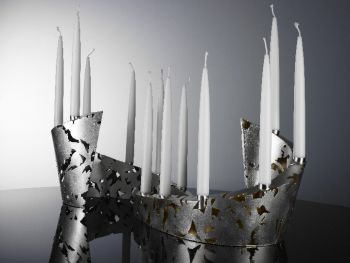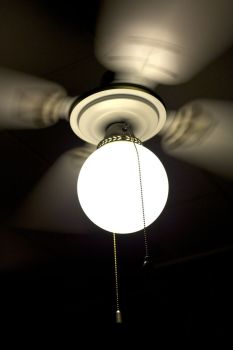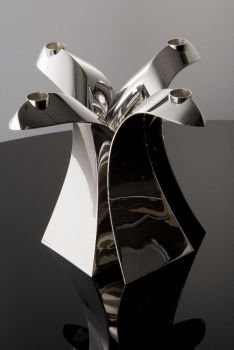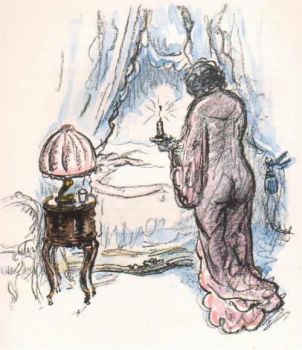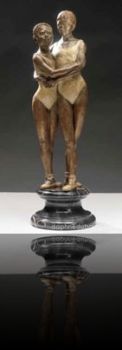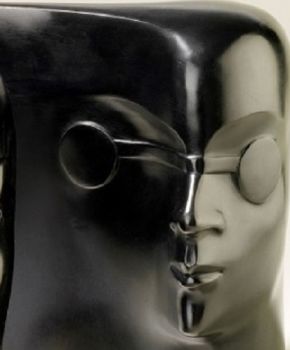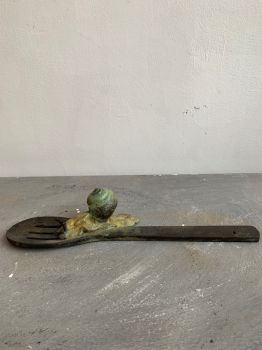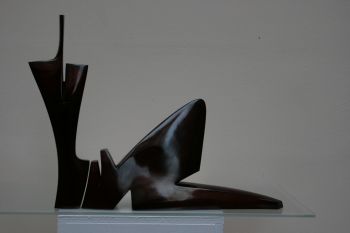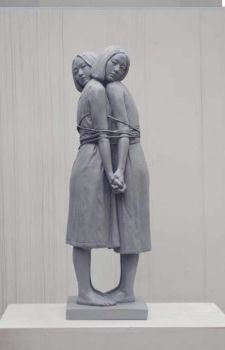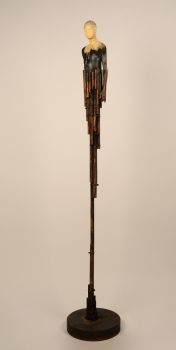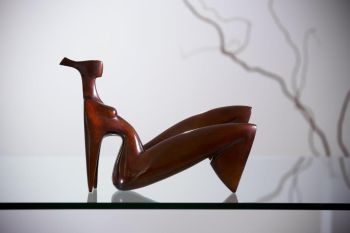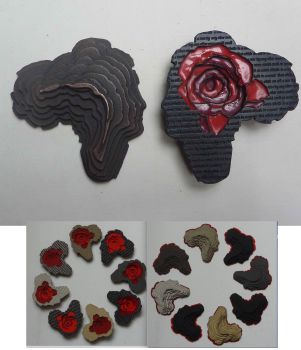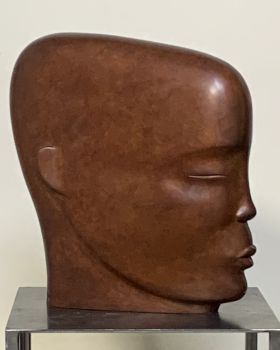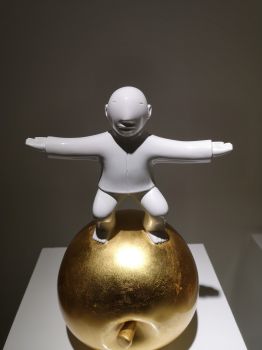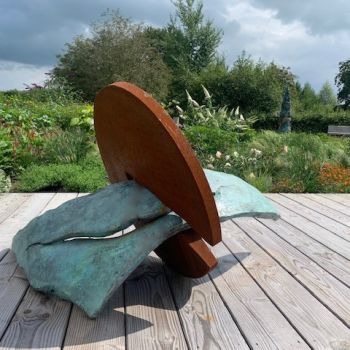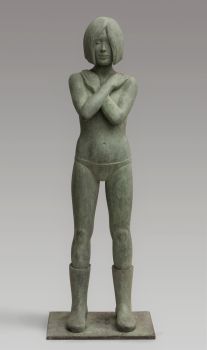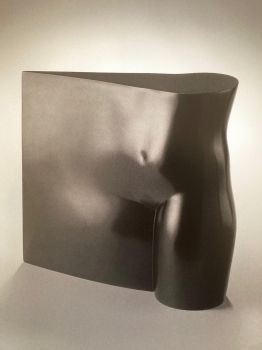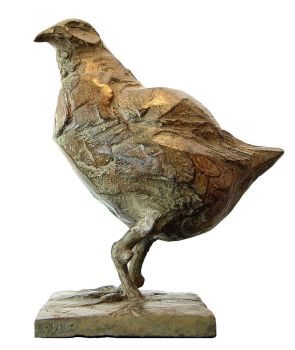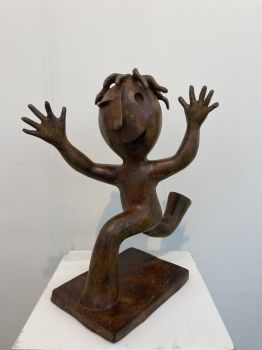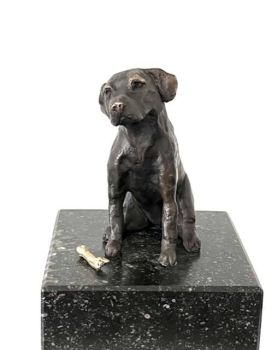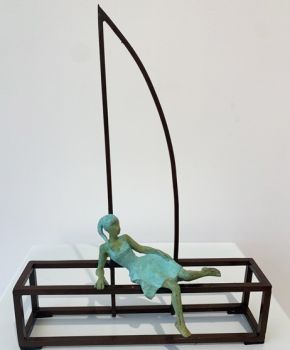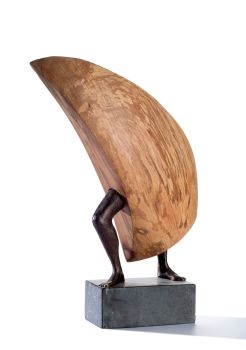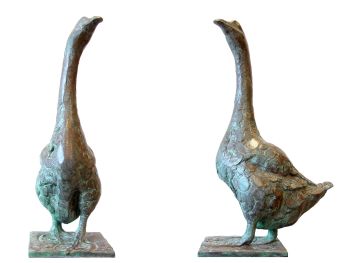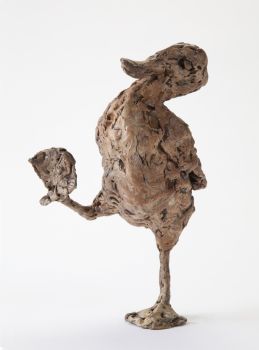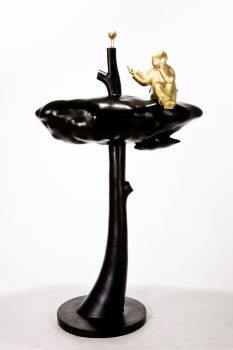Lustre Alemão, Dresdner Spiegelmanufaktur 1797
Artista Desconhecido
CopoBronzeOuroCristalMetalDouradoGemstone
75 cm, ø 62 cm
Atualmente indisponível via Gallerease
- Sobre arteA German chandelier with four lights manufactured by the Dresdner Spiegelmanufaktur. The construction of the chandelier consists of three panels in blue glass that are mounted in gilt-bronze rings. From the rings crystal ‘icicles’ hang down. The lower ring is fitted with four candleholders with bobêches and ornamental arms decorated with glass pipes. The three rings are held together with chains.
By the end of the 18th century architects started to design chandelier as an integral part of the interior. The chandeliers made around 1800 in specialized factories in Berlin (Werner & Mieth) and Dresden (Dresdner Spiegelmanufaktur) are the pinnacle of this development. The objects were made with the best materials available. Although protectionist measures of especially the Prussian authorities, dictated the use of indigenous materials, this chandelier is fitted with Bohemian glass, which was considered to be of the highest quality at the time. This chandelier of the Dresdner Spiegelmanufaktur was arguably made around 1797. In that very year a very similar model was advertised in the ‘Journal des Luxus und den Moden’ (Dezember 1797, p. 630, image 36). The laudatory description begins as follows:
“Den neuesten Gesmack in Form und verzierung der Kronleuchter zeigt die hierbey gelieferte Schöne Zeichnung eines solchen Leuchters, wie die Churfürtliche Sächsiche Spiegelfabrik zu Dresden, deren geshcmackvollen Arbeiten und schone Dessins wir schon mehrermale in unserem Journale rühmten, dergleichen anjetzt fertigt.”
[The newest taste in form and decoration of chandeliers is shown by the accompanying beautiful illustration of such a chandelier, as the Electoral Saxon Mirrorfactory of Dresden, whose tasteful work and beautiful design has repeatedly been praised in our journal, is manufacturing from now on]
The journal continues with an elaborate description of the chandelier, with particular attention to the colorful interaction of the bleu glass with the ‘crystal tears’. The reviewer of the journal praises the novelty of the use of chains instead of a central rod to connect the various parts of the chandelier, giving it a more airy appearance. The raving text concludes with the remark that the utmost tasteful design of the chandelier is very much recommended by conoisseurs.
(Journal des Luxus und Moden, Dezember 1797)
literature:
K. Klappenbach, Kronleuchter Mit Behang aus Bergkristall und Glas sowie Glasmarmkronleuchter bis 1810, Berlin 2001, pp. 49, 74, 102, 359. - Sobre artista
Pode acontecer que um artista ou criador seja desconhecido.
Algumas obras não devem ser determinadas por quem são feitas ou são feitas por (um grupo de) artesãos. Exemplos são estátuas dos tempos antigos, móveis, espelhos ou assinaturas que não são claras ou legíveis, mas também algumas obras não são assinadas.
Além disso, você pode encontrar a seguinte descrição:
•"Atribuído a …." Na opinião deles, provavelmente uma obra do artista, pelo menos em parte
• “Estúdio de…” ou “Oficina de” Em sua opinião um trabalho executado no estúdio ou oficina do artista, possivelmente sob sua supervisão
• "Círculo de ..." Na opinião deles, uma obra da época do artista mostrando sua influência, intimamente associada ao artista, mas não necessariamente seu aluno
•“Estilo de…” ou “Seguidor de…” Na opinião deles, um trabalho executado no estilo do artista, mas não necessariamente por um aluno; pode ser contemporâneo ou quase contemporâneo
• "Maneira de ..." Na opinião deles, uma obra no estilo do artista, mas de data posterior
•"Depois …." Na opinião deles uma cópia (de qualquer data) de uma obra do artista
• “Assinado…”, “Datado…” ou “Inscrito” Na opinião deles, a obra foi assinada/datada/inscrita pelo artista. A adição de um ponto de interrogação indica um elemento de dúvida
• "Com assinatura ….”, “Com data ….”, “Com inscrição ….” ou “Tem assinatura/data/inscrição” na opinião deles a assinatura/data/inscrição foi adicionada por outra pessoa que não o artista
Artwork details
Related artworks
Artista Desconhecido
IMPORTANTE E RARA GRANDE PINTURA DE 'ESTILO DE EMPRESA' ÍNDIO EM MARFIM QUE REPRESENTA UM DESFILE1850 - 1900
Preço em pedidoZebregs & Röell - Fine Art - Antiques
 Com curadoria de
Com curadoria deDanny Bree
Artista Desconhecido
Art nouveau en art déco objecten1900 - 1930
Preço em pedidoBob J. Shimanovich Kunsthandel
1 - 4 / 12- 1 - 4 / 7
- 1 - 4 / 24
- 1 - 4 / 9
- 1 - 4 / 24

